THE fighter stood in the corner of the ring, looking at her opponent on the other side. "Stay focused," she told herself. "This is serious. This is what you want. This is what you've been fighting for." She thought about the 4,000 people around her about to watch her fight. She tried to cognitively re-frame this thought: "There are people here that want to see me fail. These people hate me, and they want to watch me fail. They want to laugh at me failing. Watch. I'll prove you wrong."
The bell rang, and the fighter met her opponent in the middle of the ring. They each extended a sign of respect, and put out their right arms to touch gloves.
The fighter is Sgt. Autumn Richardson, with Charlie Company, 1-144th Maneuver Task Force, Multi-National Task Force-East in Kosovo. Richardson, a 26-year-old from Vista, Calif., is a competitor in the ever-growing sport of mixed martial arts. She has been actively sparring and training since high school, and currently trains with Team Quest, a prominent MMA gym. She was the gym's featured fighter in August 2009.
Her strong feelings for the sport have been with her as long as she can remember.
"I love MMA," Richardson said. "My dad had me watching and training in MMA since I was a small kid."
As she grew older, Richardson found her personality drove her toward competing in MMA.
"I guess I'm kind of an adrenaline junkie. I've always like things that are hardcore and have that adrenaline rush. And (MMA is) something I'm good at and passionate about," said Richardson.
MMA came to prominence in the modern era in the mid 1990s mostly because of the Ultimate Fighting Championship. It was the first UFC tournament that Brazilian fighter Royce Gracie won by employing his family's fighting style, a derivative of Brazilian jiujitsu, which focuses on grappling, but especially ground fighting. In that tournament, Gracie defeated three opponents in a total of five minutes.
The effectiveness of BJJ and the Gracie family's techniques led to its incorporation in the Modern Army Combatives Program. According to the Modern Army Combatives Web site, when the U.S. Army Rangers were looking to change the way it taught combatives in 1995, it sent several Rangers to the Gracie Jiu-Jitsu Academy in Torrance, Calif. The Rangers found that the jiujitsu taught there fit the Army's needs almost perfectly, and, using actual combat experience as a guide, adopted a training system with the Gracies' jiujitsu as a base.
The program spread throughout the Army, and in 2000, was adopted as Army doctrine. Richardson said that the values that one learns in MMA have abundant crossovers into military life, as well.
"Mixed martial arts teaches you mind over matter and the military teaches you that as well. If you don't mind, it doesn't matter," Richardson said. "Your mind is so powerful and strong and mixed martial arts teaches you to focus and take your time and train hard and you can implement that into the military and have a successful career."
Richardson has used this mantra to improve her own military career. She is the only female rifleman in her task force, as well as having the best Army physical fitness test score, with 342 points on the test's extended scale.
Training in Modern Army Combatives has led other MNTF-E members to get into the sport. Staff Sgt. Michael Rider, Paso Robles, Calif., also with the 1-144th, started training actively after being involved in an Army combatives class.
"What really got me into it was when I went to BNCOC (Basic Noncommissioned Officer Course) phase one," Rider said. "The school had actually incorporated combatives into their program. And when I started doing that, I fell in love with it, so I started pursuing it as an outside interest."
Rider has been training now for almost three years. He has focused most of his training on a style of stand-up fighting called Hawaiian Kempo, and has earned him a red belt in the first degree.
Rider said that martial arts training has not only improved him as a Soldier, through increased conditioning, but also helped him overall as a person, as well.
"I have a lot more confidence in what I do, even when I talk to people. I used to be kind of a quiet person," Rider said. "You learn this style, and as you start to grow and grow; your confidence level starts to rise. You're like, 'yes, I can do this. I know I can do this.' And with each new belt, it's kind of like a promotion in the Army, with each new rank; it just builds up your confidence more and more."
Richardson and another Soldier in the 1-144th have harnessed their love for both MMA and the military, forming a business that seeks to help other Soldiers who want to get into the fight game.
"To find fights and help them find sponsors is a big thing that we want to do, because it's hard while you're in the military to be able to get fights," Richardson said. "I mean, a lot of people are there to support military, but going about doing it with our time restrictions and stuff like that is harder. So we all have our different hookups and we put it all together."
Richardson and Rider are teaching classes for MNTF-E Soldiers looking to improve their fight skills or overall conditioning.
"It will start off slow until people get their basic stances, and then it will get very progressive," Richardson said. "It's going to be a great workout whether people want to go just to work out, or if people want to learn mixed martial arts."
Richardson has used both the military and MMA to improve her skills, both as a Soldier and a fighter. Both have given her a steely conviction that dictates her attitude in life.
"I'm very determined," Richardson says. "I don't like to get beat by people."
Spc. Drew Balstad is assigned to the 116th Public Affairs Detachment, supporting Multi-National Task Force-East. MNF-E is a U.S.-led task force commanded by Brig. Gen. Al Dohrmann. This task force is comprised of nearly 2,200 Soldiers, including Task Force Hellas and Task Force Polish/Ukraine. The charter mission of MNTF-E is maintaining a safe and secure environment and providing freedom of movement for the people of Kosovo.
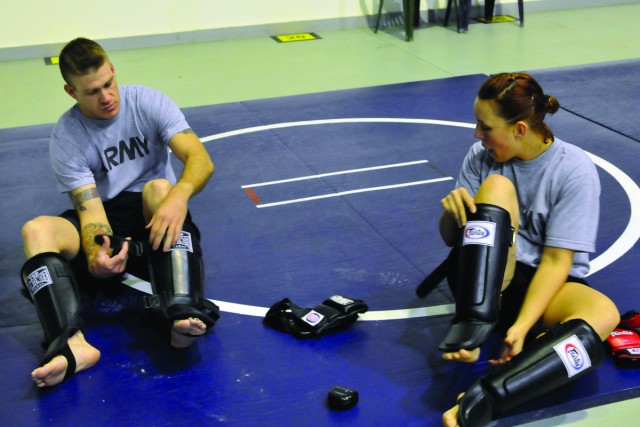

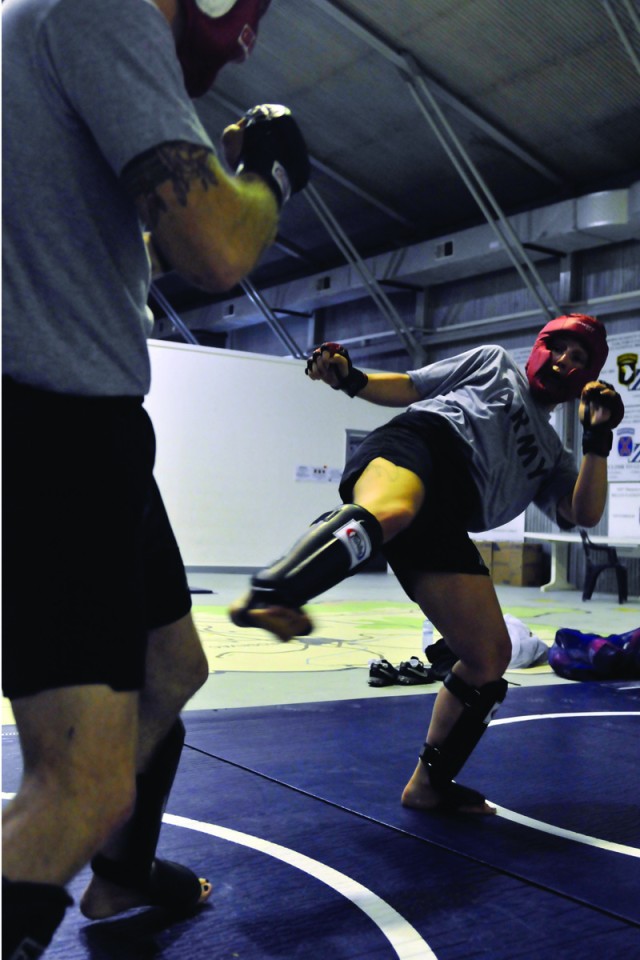
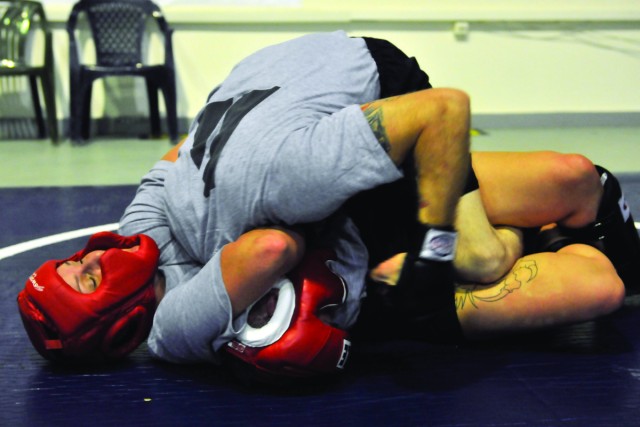
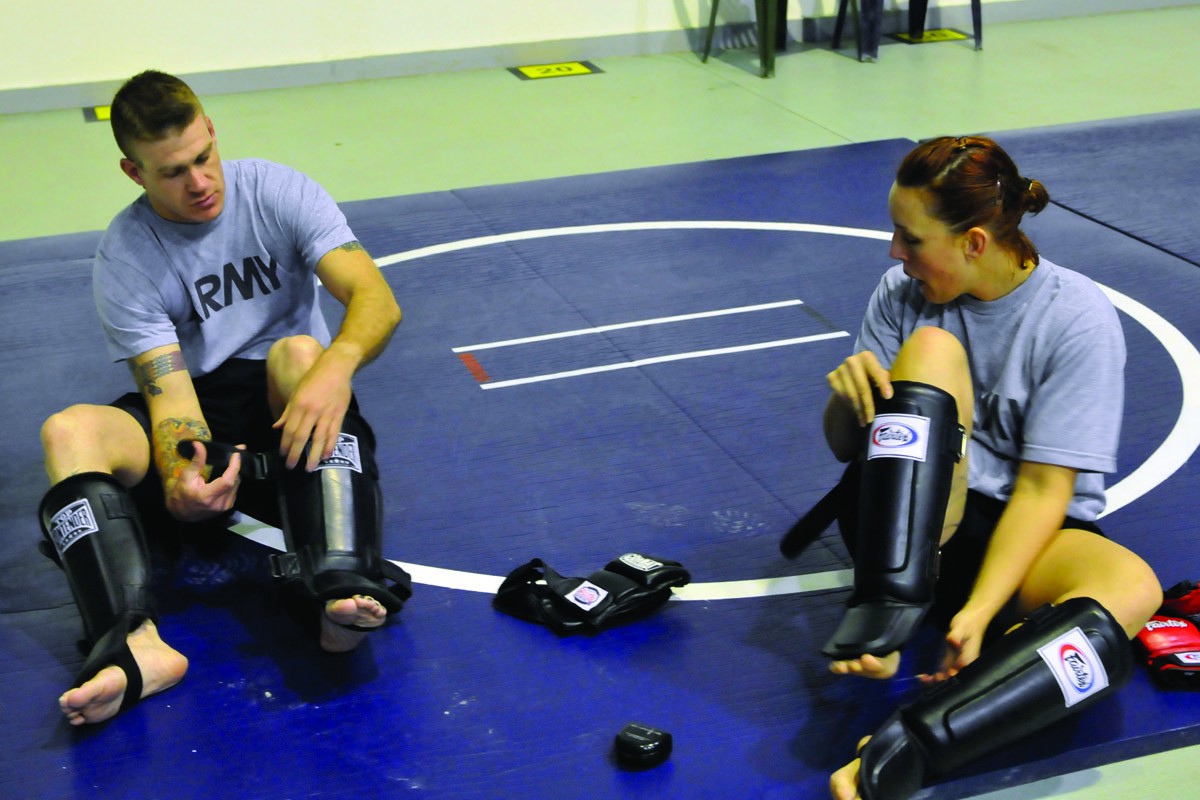
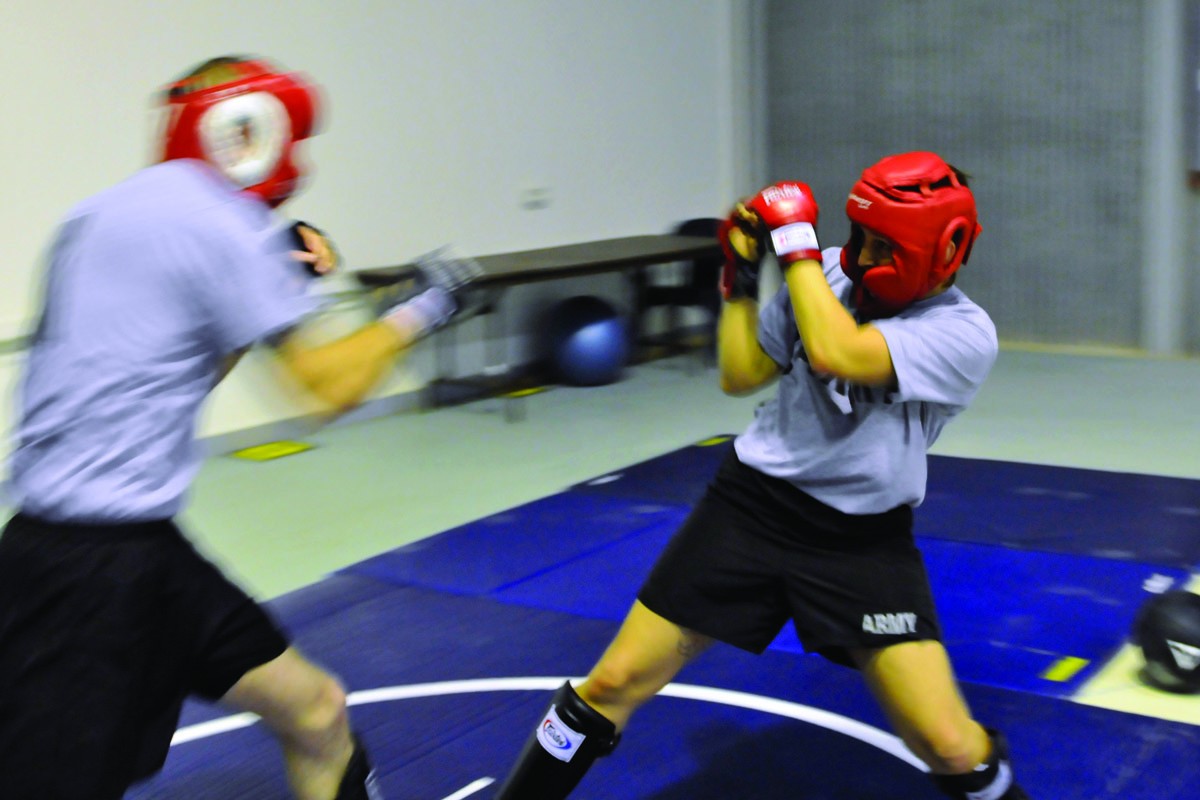
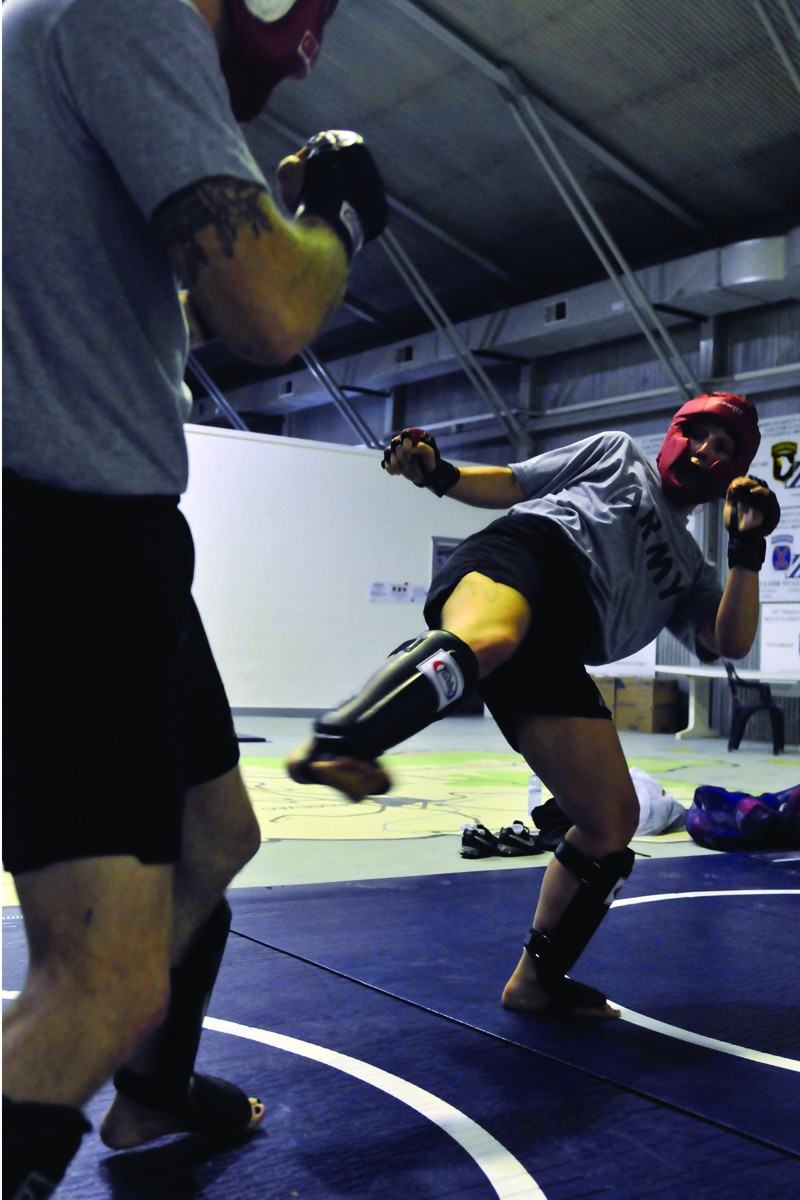
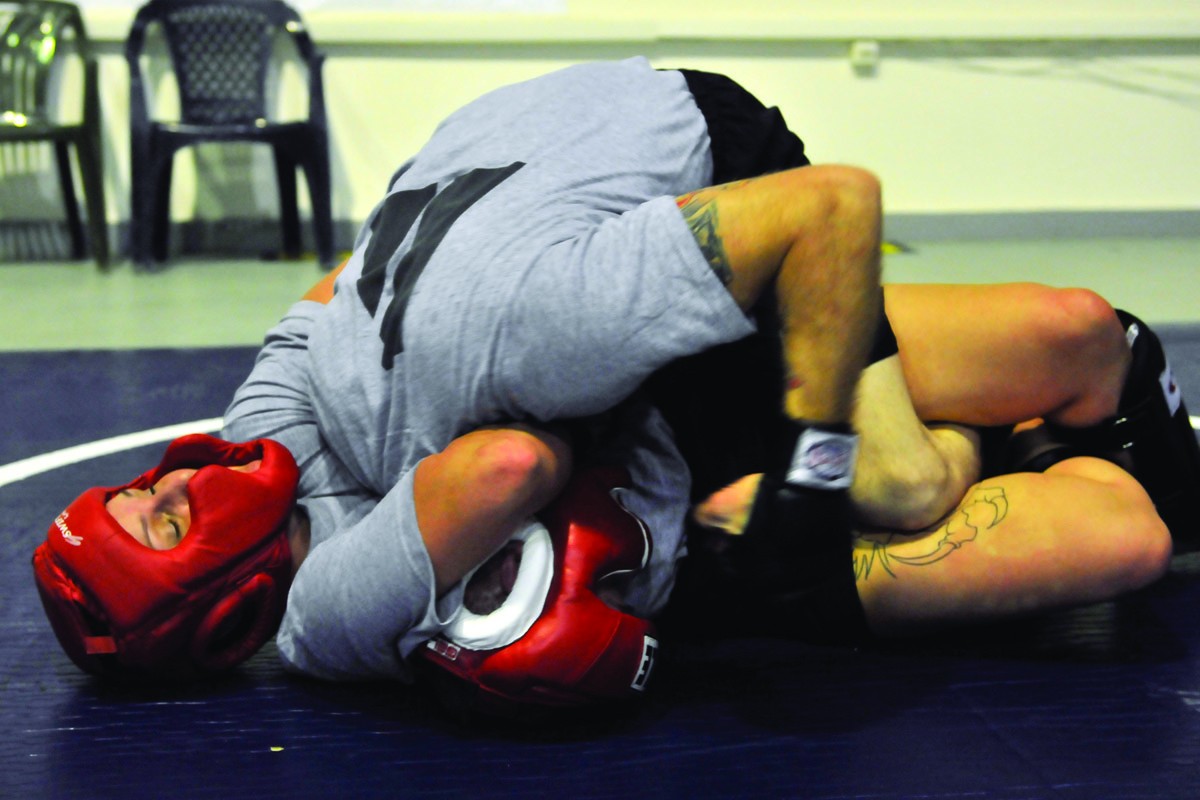
Social Sharing